No one is safe from getting burned. In everyday life or as a result of an accident, a burn scar may remain on the body. And all this is not only an unpleasant reminder of what happened, but also a violation of the aesthetics of the body. Hence the questions arise: “How to remove a burn scar and what do dermatologists advise?”
What types of burns are there?
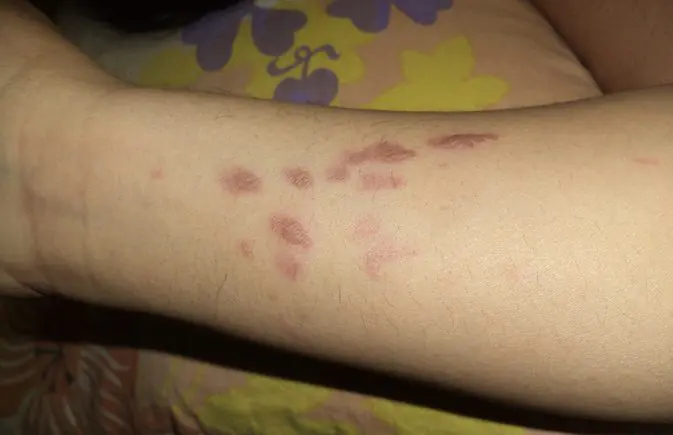
Most often, you can get a burn at home, doing this or that work or through negligence. And after the burn, a scar remains, the final appearance of which will depend on what type of burn was received.
There can be several types of burns:
- Thermal, which is the easiest to “earn.” Thermal burns can be caused by exposure to high temperatures: hot water, hot steam, hot objects, fire, direct sunlight, etc.
- Chemical burn. Those who work with chemicals, whether caustic alkalis or high concentration acids, are at risk of getting it. Upon contact with the skin, such substances begin to instantly “corrode” the top layer. If the chemical is not removed from the skin in time, the “corrosion” will spread to the deeper layers of the dermis, right down to the muscle and bone tissue. The color of the burn will depend on what substance gets on the skin: black and brown spots are left by sulfuric acid, a yellow tint is left by hydrochloric acid, yellow-green and yellow-brown are left by nitrogen, and hydrogen peroxide leaves white marks.
- Electrical burns can be caused by electric shock. At the site of injury, characteristic marks with bubbles of serous fluid remain.
Photos of burn scars confirm that each cause of burn leaves an “individual” scar. Several examples are presented in the article.

First aid
Before removing a burn scar, it is necessary for the burn to heal. But before that, you will need to provide first aid when receiving it. This does not mean that medical intervention will not be needed. On the contrary, correctly provided first aid will significantly ease the situation until the ambulance arrives (if necessary):
- Initially, it is necessary to eliminate the cause of the burn. That is, remove hot objects, fire, exposed wires, etc. from the victim. At the same time, those who are trying to help must be careful.
- After this, the burn site is freed from clothing. If the burn is severe, the fabric is carefully torn or cut off.
- In case of a thermal burn, the damaged area must be immediately cooled: cover with snow or a handful of ice cubes, and immerse in cold water. If the damage is minor, then this method will help avoid the formation of watery blisters.
- But if the injury is serious, then first you need to wrap it with a clean cloth or film, and only then direct a stream of cold water to the burned area.
- In addition to external treatment of the wound with water, it is necessary to give the victim a lot to drink in order to replenish lost fluid.
However, the measures listed are not applicable to every situation. What to do in other cases:
- If a chemical burn is caused by hydrochloric acid, then washing the wound with water is unacceptable, since the combination of acid and water releases thermal energy, and this will only worsen the situation.
- In a situation with slaked lime, the use of water is also contraindicated.
In specific cases, water is replaced with a weak soap solution.
And if you get a burn, you should absolutely not do the following:
- pierce blisters formed as a result of a wound: this will prolong the healing period and can lead to infection of the wound, and, most importantly, the liquid in the blister is blood plasma, which over time should return to its normal course;
- iodine, brilliant green, peroxide and powders should not be applied to the wound;
- It is also prohibited to treat the burn site with alcohol-containing products;
- Do not tightly bandage or rewind the damaged area.
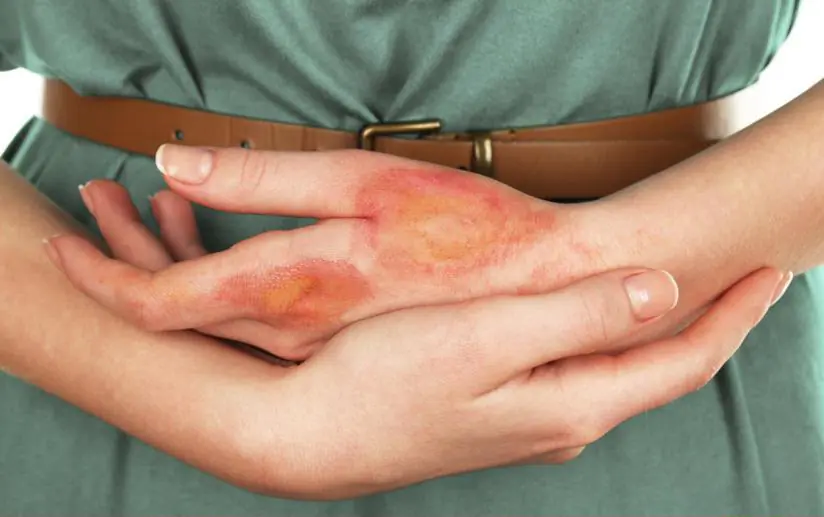
Degree of burns. How to treat scars after them?
Regardless of how the burn was received, the injury is divided into several degrees, depending on the scale. And each such degree is treated in a certain way:
- Grade 1 is expressed by profuse redness of the damaged area and its swelling. With such an injury there is no need to see a doctor. It is enough just to apply medication at home and expect healing in 7-10 days.
- Grade 2 is expressed by redness, burning and blistering. Stage 2 is also not dangerous, and you can cure it yourself at home using medication. The healing period will be up to 20 days.
- Stage 3 is recognized by the following signs: skin necrosis, swelling, hyperemia around the wound, the appearance of blisters or scabs. In this case, hospitalization is already required. Surgical treatment, drug correction, and cosmetic procedures are used. Surgical intervention and skin grafting are also possible. The recovery process takes from 2 months.
- Stage 4 is the most difficult situation. Tissue necrosis, charring of the dermis and internal tissues, sometimes down to the bone, is observed. Hospitalization is required immediately. Treatment will consist of drug correction and cosmetic procedures. Surgical intervention, including skin grafting, is not excluded.
After each degree of burn, marks in the form of scars remain on the skin. Minor injuries, grades 1 and 2, are easier to heal because they are shallow. To solve this problem, many remedies for burn scars have been developed.
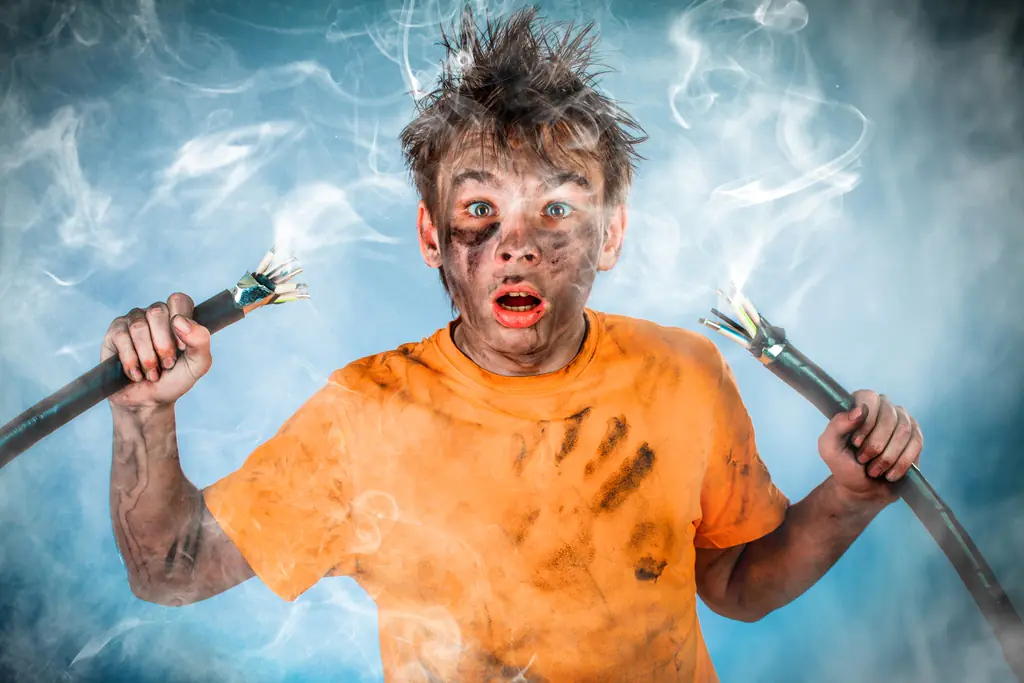
Effective creams for burn scars. What to choose from?
How to treat the consequences of burns? The most popular products that help eliminate the consequences of injury are gels, ointments and creams. For burn scars, the following have shown particular effectiveness:
- "Kontraktubeks". The gel contains heparin, which softens rough scars and restores damaged cells, allantoin relieves all discomfort during scar healing, and onion extract serves as a barrier to scar formation and also has a disinfecting effect.
- Zeraderm Ultra has a regenerating, healing, antibacterial, analgesic and anti-inflammatory effect.
- "Levomikol" is an ointment that solves the problem of removing scars after burns. The product heals, draws out suppuration, and disinfects.
- Silicone scar patch is an elastic gel plate. It is completely safe and, most importantly, effective in combating burns. Although it is dense, it does not prevent the flow of air to the wound, but it will save you from getting wet.
- "Panthenol". The product has a good moisturizing, healing and anti-inflammatory effect.
- "Kelofibrase". This ointment increases blood circulation in scar tissue, accelerates healing, and makes the scar softer.
- "Ozhogov.net" is an effective remedy, the application of which accelerates the healing effect, relieves redness, swelling, and softens scar tissue.

The presented remedies for burn scars show a good effect, but their effect does not appear immediately. It will take at least six months to achieve complete healing. Moreover, each of the presented products must be applied to the scar up to 4-6 times a day.
The listed products are often used on the recommendation of dermatologists, however, they are also suitable for independent choice, since they are harmless.
Cosmetic procedures
You can remove a burn scar - both old and very fresh - with the help of cosmetic procedures. They, of course, will cost much more than ointments and gels, but innovative technologies used in cosmetology make it possible to achieve amazing effects.
- Laser peeling. The method allows you to remove a burn scar on your face. The process is completely painless and safe. The laser beam gently removes “extra” scar cells, making the scar softer, smoother and almost invisible.
- Chemical peeling. Using a special device, a special substance enriched with fruit acid compounds is directed to the skin. Chemical peeling can whiten, smooth and soften the scar.
- Diamond grinding. Used to correct facial skin. Thanks to this method, it is possible to effectively remove even the most old and extensive burn scars.
- Glucocorticoid injections are hormonal therapy injected directly into scar tissue. The method is mainly applicable for removing keloid scars. High risk of side effects.
- Physiotherapy of 5-15 sessions: paraffin treatment, diadynamic therapy, galvanization, cryotherapy, infrared irradiation, electrophoresis, darsonvalization. The procedures are aimed at restoring the elasticity of scar tissue, softening and smoothing it.
According to the recommendations of dermatologists, it is worth starting to remove scars using cosmetic methods after the scar is fully formed. On skin that is not completely healed, the effects of various devices can be detrimental, not to mention effective.
Radical method
Radical methods that help quickly remove a burn scar include surgical methods, including skin grafting. Such measures are prescribed if more gentle treatment methods are not effective in a particular case.
Surgical treatment involves removing scar tissue, correcting damaged skin, and applying a cosmetic suture. As for plastic surgery for skin grafting, it is used quite infrequently. The event is risky, because the new skin may not take root, and there is also a high risk of keloid scars appearing on it.
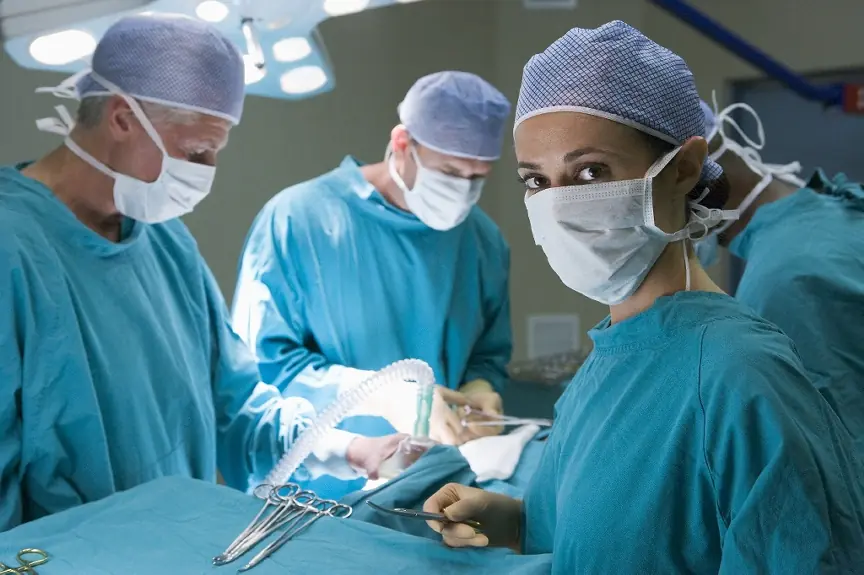
ethnoscience
Is it possible to remove a burn scar using folk remedies? There are a lot of similar methods, because everyone wants to quickly and effectively get rid of the consequences of burns, and also save money by using inexpensive means.
Traditional medicine deals with this kind of problem and has several recipes for treating burn scars.
If the burn is not serious (1st or 2nd degree), then to treat its consequences, that is, fresh scars, use the following:
- Plenty of cold water.
- Applying potatoes, lemon juice, parsley, beeswax, cosmetic clay.
Cosmetic clay in combination with water shows good results if this mixture is applied to the scar and left for 15 minutes. Twice a week is enough for the scar to noticeably lighten. This remedy for burn scars has no contraindications.
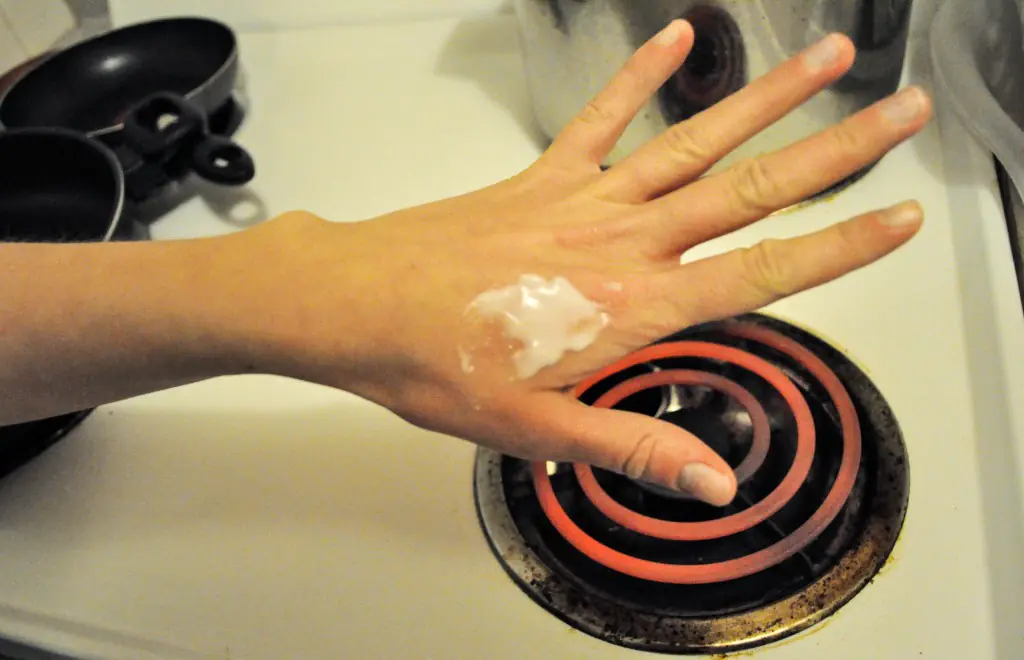
A mask is prepared from beeswax with the addition of butter (1:2), and also 10 drops of lemon juice and aloe juice are added. Apply the prepared product to the scar several times a day.
Onion juice will help heal fresh scars. It is enough just to prepare a paste from it and apply it to the affected area on the arm or leg. It is not possible to completely remove a burn scar with this remedy, but you can significantly reduce it and make it more elastic.
Although doctors have mixed opinions regarding traditional medicine, they still approve of some remedies. For example, the well-known bodyaga, which is often prescribed by many dermatologists. It is used as a mask compress a couple of times a week for several months. Bodyaga works well to remove a burn scar on an arm, leg, body, but it is better not to apply it to the face.
How can you not camouflage scars?
Many, after they have managed to remove a burn scar, do everything they can to disguise as much as possible what is left of it. Dermatologists are extremely wary of such camouflage methods, since the consequences on the skin can be unpredictable.
What are these methods:
- Getting a tattoo over a scar. Of course, this is not a bad way to remove reminders of recent burns from your memory and body. But, according to dermatologists, this should not be done, since getting a tattoo is a painful and stressful procedure for skin that is already “damaged.” There is no point in making the situation worse.
- People with severe burns should avoid direct exposure to ultraviolet radiation, be it the sun or a solarium. This causes the scar to turn red and become even more noticeable. But, since the sun cannot be avoided, doctors strongly recommend lubricating the scar with special sunscreens.
- If the burn scar is serious, then you should not self-medicate to get rid of it. Consulting a specialist in this matter will not hurt, because complex treatment may be needed to eliminate the problem, and some methods may not be suitable at all.
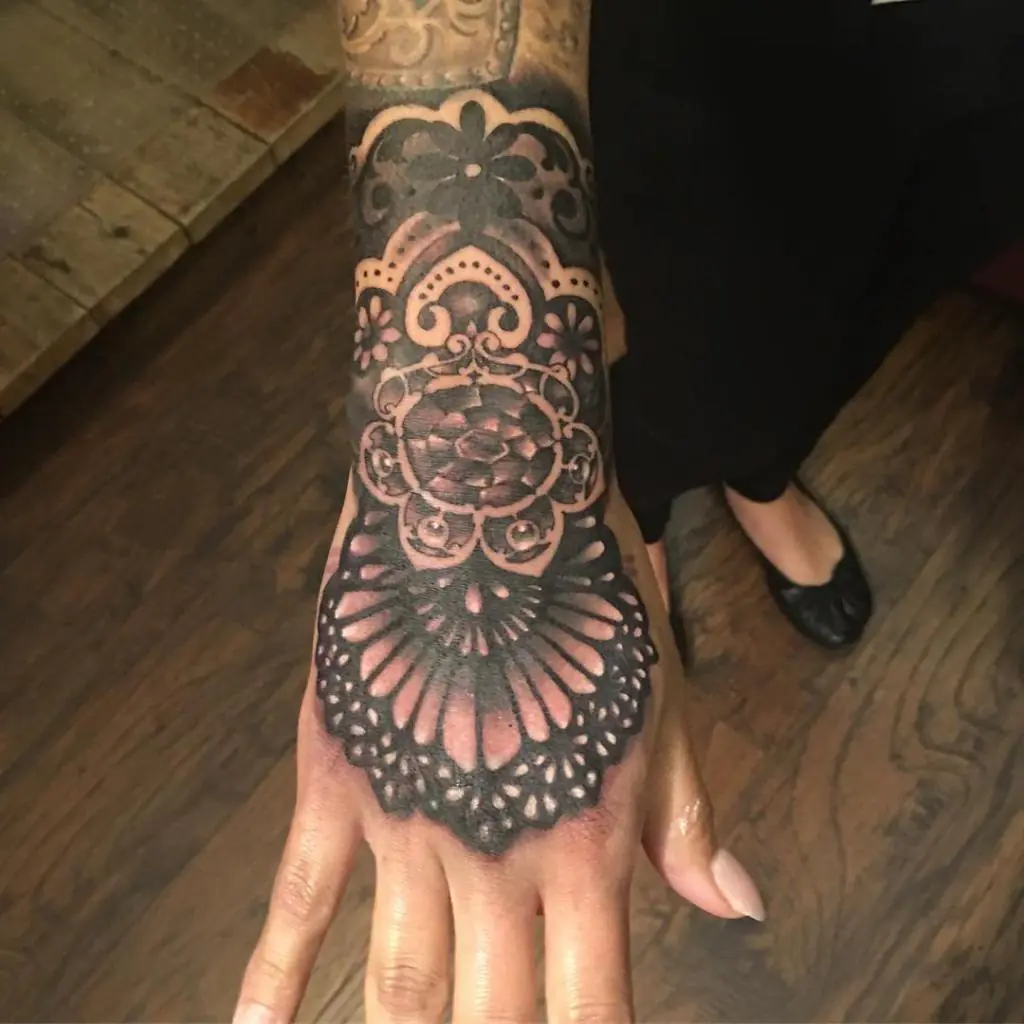
Rehabilitation
A fresh burn scar that appears requires long-term rehabilitation before proceeding with the procedures for its removal. Doctors most often prescribe the following rehabilitation methods:
- Ultraviolet irradiation (but only at the rehabilitation stage). The procedure promotes the rapid restoration of damaged skin cells, improves immunity, and eliminates the inflammatory process.
- Magnetotherapy. First of all, the procedure is aimed at stabilizing the psychological state of the victim (in case of serious burns), and in addition, after the technique, blood supply to the damaged tissues improves.
- Phonophoresis. Suitable for resorption of scar tissue and intensive blood supply to burned cells.
- Laser therapy. Under the influence of red light, enhanced tissue regeneration and an anti-inflammatory effect occur. And besides, laser therapy stabilizes the emotional state of the victim, despite the prognosis doctors give him for his recovery.
- Aeroionotherapy. The procedure increases the throughput of damaged, compacted tissues. The released ions easily penetrate through the tissue and suppress the pain that occurs during healing. And if analgesics are used in combination with the procedure, the result of the manipulations will be greatly enhanced.
- UHF therapy relieves active inflammation.

Conclusion
There are many ways to quickly remove a burn scar. And each is designed specifically for a certain degree of severity of the scar being formed. And the sooner treatment of the burn, and then the scar itself, begins, the less noticeable it will be at the end of all procedures.
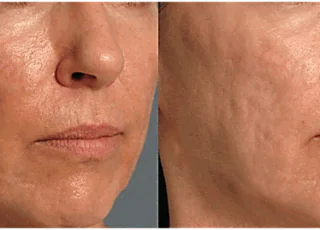
Burn scars are formations that appear at the site of damaged skin after negative thermal exposure. In this case, it is necessary to remove scars after burns. There are currently several treatment options:
- medicinal:
- surgical;
- cosmetological.
The last method is safe and popular. At the same time, it is very important to choose a clinic and a specialist who will help cope with the defect as effectively as possible.
Features of burn scars
In most cases, burns leave visible marks on the skin. The impact can be chemical and thermal. The size of the scar will depend on the degree of burn or the depth of damage to the epidermis. During healing, the damaged area is covered with a special tissue consisting of collagen. Scars may have a pink or bluish tint, an uneven surface, sometimes in the form of bumps.
The main reasons for the appearance of a scar after a burn are:
- repeated damage, injury to the burn site;
- individual characteristics of human skin;
- during the healing process there was ultraviolet exposure or infection of the wound;
- the burn is located on delicate areas of the skin;
- disturbance of metabolic processes in the body.
Removing burn scars is necessary not only for cosmetic purposes, but also for general health. The fact is that some types of scars are very dense and can even make it difficult to move the joint if the burn was extensive and in the joint area.
Is it possible to remove scars after a burn?
At the moment, laser resurfacing of scars and scars is particularly effective. This procedure involves exposing damaged tissue to a laser beam. Thanks to a special technique, burn marks can be made less noticeable. This effect is achieved due to the following aspects:
- the overall skin texture is evened out;
- the color of the damaged areas is normalized;
- collagen synthesis is ensured;
- skin renewal is performed.
This method allows you to start the regeneration process as safely as possible.
Laser scar removal also has the following benefits:
- if done correctly, you can completely get rid of traces;
- no side effects;
- you can perform grinding and removal of scars of any size;
- with the right approach, you can get rid of a scar in a few trips to the clinic;
- disinfection is performed, which avoids re-inflammation.
Due to the above advantages, many experts recommend removing burn scars with a laser.
How to remove atrophic scars
Atrophic scars are very dense formations that can consist almost entirely of connective tissue. The main cause of occurrence is mechanical damage or burns. Due to the nature of their formation, they can be extremely difficult to deal with.
Atrophic scars can be removed using special peelings. At the same time, it is very important to choose the right type of influence. Otherwise, you can only make the situation worse. In addition, microdermabrasion or skin resurfacing can be used. This makes scars less noticeable.
Laser removal of atrophic scars is also popular. This is due to its effectiveness. Multiple treatments may be required to achieve maximum results. The degree of impact is determined depending on the characteristics of the skin and the condition of the scar.
Atrophic scars on the face can be removed using mesotherapy or biorevitalization. Both methods trigger the process of cell regeneration, which allows you to even out the skin texture.
Scar removal is a complex procedure that can only be trusted to professional specialists. Therefore, you need to be extremely careful when choosing a clinic. BioMi Vita specialists will help remove scars after burns using ultra-modern methods.
Burn scars - these are dense connective tissue formations on the skin that occur when the normal healing of burn wounds is disrupted, as well as when there is extensive and/or deep tissue damage. The main problem for doctors and their patients is hypertrophic and keloid burn scars.
In our company you can purchase the following equipment for the treatment of burn scars:
According to a study of 100 patients with burns (including 59 children), hypertrophic and keloid scars were recorded in 38% of cases, including 34% in adults and 41% in children. Another study analyzed patients in the burns department of Salisbury District Hospital - in 1968, hypertrophic scars were noted in 51% of cases, whereas in 1984 it was already 63% of cases.
The following factors increase the likelihood of developing burn scars:
- young age;
- female;
- localization of damage to the neck and upper extremities;
- more than one surgical intervention in the injured area;
- transplantation of a mesh skin flap into the burn area.
Etiology and pathogenesis
In normal life, most burns occur at temperatures of 100–200 °C with skin exposure lasting more than 1 second. In hot shops and combat zones, burns are possible at temperatures over 1000 °C and exposure time of less than 1 second. The critical level at which thermal tissue damage develops is considered to be 43 °C - temperatures below this value do not cause burns, regardless of the duration of contact with the skin.
The level of local temperature increase in tissues depends on their thermal conductivity - in the dermis it is higher than in subcutaneous fat, since fat is a good insulator. Therefore, thermal damage leading to complete necrosis of the dermis may have little effect on the underlying lipid layer. Although at very high temperatures not only the dermis and hypodermis are completely destroyed, but also skeletal muscles, fascia, internal organs and bones (rice. 1).
Hair follicles extend deep into the subcutaneous fat, but this does not always protect them from high temperatures. Although their preservation is critical for rapid and high-quality healing of the injured area.
Superficial burns (first level) - This is thermal damage to one or more layers of the epidermis, with the exception of the basement membrane. The underlying dermis along with the hair follicles also remains intact. Healing of superficial burns usually occurs without scarring, since the bottom of the hair follicles supplies many fresh keratinocytes, which help quickly repair the affected area.
Medium burns (second level) - in this case, the entire epidermis and papillary (superficial burns 2 levels) or reticular layer of dermis (deep burns 2 levels). After thermal exposure, macrophages are activated and begin to clean the wound of necrotic debris. Next, fresh granulation tissue forms under the dead tissue, forming the so-called burn scab. All this contributes to the restoration of the epidermis and the formation of a thin normotrophic scar.
With moderate burns, the deep parts of the hair follicles remain viable. The keratinocytes lining their bottom begin to actively divide and migrate to the affected area, promoting reepithelialization. In severe cases, loss of hair follicles may result in insufficient regenerative activity to effectively close the damaged area. If an infection occurs, recovery of the burn wound is delayed and may result in the formation of a hypertrophic or keloid scar.
Deep burns (third level) — thermal damage extends quite deep into the dermis and partially into the subcutaneous fat, where it completely destroys the hair follicle, including its base. Rapid skin regeneration by follicular keratinocytes is impossible in this case - new cells come only from the edges of the wound, so such damage heals slowly. Plus, removing large volumes of necrotic tissue requires long-term work of macrophages. As a result, the likelihood of infection increases, which further complicates and delays regeneration, promoting the formation of hypertrophic or keloid scars.
Main outcomes of burns:
- Healing of a burn wound with complete restoration of the function of the damaged organ or area.
- Healing of a burn wound with partial loss of function of the damaged organ or area.
- Healing of a burn wound with significant loss of function of the damaged organ or area, up to its complete loss.
- The formation of hypertrophic or keloid scars, accompanied by itching, pain, ulceration and severe cosmetic defects.
Rice. 1. Levels of burns and depth of tissue damage
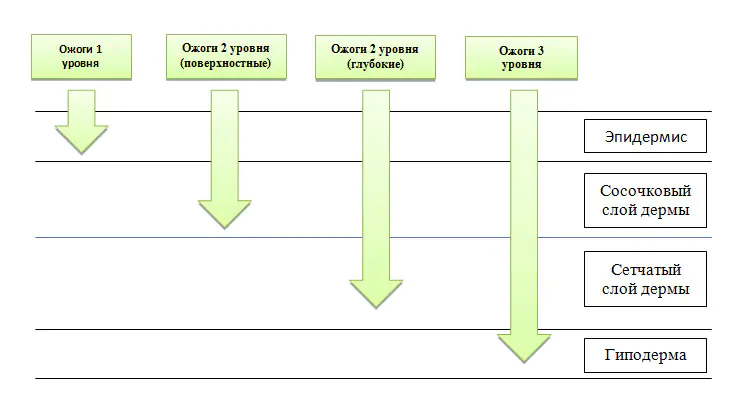
Clinical manifestations
The most severe forms of burn scars are hypertrophic and keloid. Hypertrophic scars are formed as a result of excessive collagen formation - they are dense, rise above the skin level, but do not extend beyond the initial damage and can undergo involution over time. Keloid scarring represent a tumor-like proliferation of immature connective tissue due to the uncontrolled proliferation of fibroblasts. Their peculiarity is rapid growth, accompanied by paresthesia, itching and pain. Keloids can actively increase in size, extending beyond the burn damage to the skin in the form of peripheral strands. They almost never shrink or resolve.
Hypertrophic and keloid scars usually occur in patients with severe (deep and/or extensive) burns (rice. 2). An aggravating factor is the addition of infection, which significantly slows down the evacuation of necrotic contents and further re-epithelialization. In the area of hypertrophic and keloid scars, pigmentation disorders are often observed - local darkening or blanching, even discoloration.
Burn scars may increase in size over several months and then gradually regress over several years, becoming flat scars without any additional symptoms. However, this scenario does not occur in all patients.
An accurate assessment of the condition of the burn scar is necessary for diagnosis and choice of treatment strategy. Among the various classifications proposed in recent years, the most commonly used is Vancouver Scar Rating Scale (Vancouver Scar Scale, VSS). In Russia, its modification was developed, presented in table 1.
Table 1. Modified Vancouver Burn Scar Scale



